- Agricultural Techniques to Maximize Potato Growth
- 1. Soil Preparation
- 2. Crop Rotation
- 3. Proper Seed Selection
- 4. Spacing and Planting
- 5. Irrigation and Fertilization
- 6. Disease and Pest Control
- 7. Harvesting and Storage
- Importance of Advanced Agricultural Techniques for Potato Growth
- Introduction
- Better Yield
- Pest and Disease Management
- Water Efficiency
- Nutrient Management
- Sustainable Farming
- Conclusion
- Maximizing Potato Yields through Efficient Farming Practices
- Introduction
- 1. Soil Testing and Preparation
- 2. Crop Rotation
- 3. Proper Irrigation
- 4. Integrated Pest Management
- 5. Timely Harvesting
- Conclusion
- The Role of Soil and Nutrient Management in Potato Growth
- Soil Preparation
- Nutrient Management
- Utilizing Crop Rotation for Optimal Potato Harvests
- Benefits of Crop Rotation for Potato Growth
- Recommended Crop Rotation Practices for Potatoes
- Conclusion
- Effective Pest and Disease Control Strategies in Potato Farming
- 1. Crop Rotation
- 2. Proper Field Preparation
- 3. Use of Certified Disease-Free Seed Potatoes
- 4. Monitoring and Early Detection
- 5. Integrated Pest Management
- 6. Proper Storage and Post-Harvest Handling
- Enhancing Potato Growth with Proper Irrigation Techniques
- 1. Soil Moisture Monitoring
- 2. Watering Frequency
- 3. Irrigation Method
- 4. Timing of Irrigation
- 5. Water Quality
- Harvesting 15-Litre Buckets from Each Potato Plant
- 1. Proper Planting Technique
- 2. Regular Feeding and Watering
- 3. Provide Ample Sunlight
- 4. Proper Hilling
- 5. Regular Pest and Disease Monitoring
- 6. Harvesting
- 7. Curing and Storage
- “Question-Answer”
- What are some advanced agricultural techniques for maximizing potato growth?
- How can precision planting help maximize potato growth?
- What is controlled irrigation and how can it benefit potato growth?
- How does nutrient management contribute to maximizing potato growth?
- What is crop rotation and why is it important for potato growth?
- How can pest and disease control techniques maximize potato growth?
- What are the advantages of harvesting 15-litre buckets from each potato plant?
- “Video” I can’t believe it; growing potatoes on a pallet has so many tubers
When it comes to growing potatoes, traditional methods often yield disappointing results. However, thanks to advanced agricultural techniques, farmers and gardeners can now maximize potato growth and achieve incredible yields. Utilizing these techniques, it is possible to harvest up to 15-litre buckets of potatoes from each plant.
One of the key factors in achieving such impressive yields is proper soil preparation. The soil needs to be well-drained and fertile, with a pH level of around 6.0 to 6.5. It is also important to add organic matter, such as compost or well-rotted manure, to enrich the soil and provide essential nutrients for the potato plants.
In addition to soil preparation, utilizing advanced planting techniques can greatly contribute to maximizing potato growth. For example, by planting the seed potatoes in a raised bed or large container, such as a 15-litre bucket, gardeners can ensure that the plants receive ample sunlight, proper drainage, and optimal growing conditions. This technique also allows for better spacing between plants, reducing competition and enabling each plant to reach its full potential.
Furthermore, implementing a strategic watering and fertilization schedule is crucial for promoting healthy potato growth. Potatoes require regular watering to keep the soil consistently moist but not waterlogged. Fertilizers, particularly those high in potassium, should be applied at appropriate intervals to support the development of strong, robust plants and a bountiful harvest.
In conclusion, by utilizing advanced agricultural techniques such as proper soil preparation, strategic planting, and careful watering and fertilization, it is possible to maximize potato growth and achieve impressive yields. With the use of large containers like 15-litre buckets, each plant can yield an abundance of potatoes, providing gardeners and farmers with a rewarding and fruitful harvest.
Agricultural Techniques to Maximize Potato Growth
When it comes to maximizing potato growth, advanced agricultural techniques can significantly improve harvest yields. By implementing these techniques, farmers can ensure healthy and abundant potato crops.
1. Soil Preparation

One of the critical elements in potato growth is the quality of the soil. It is crucial to prepare the soil properly before planting. This can be done by:
- Testing the soil to determine its pH level, nutrient content, and organic matter.
- Amending the soil with compost or organic matter to improve its structure and fertility.
- Tilling the soil to create a loose and aerated environment for the potato roots to grow.
2. Crop Rotation
Rotating crops is an effective technique to prevent the build-up of pests and diseases specific to potatoes. Instead of planting potatoes in the same area every year, farmers should consider rotating them with other crops such as legumes or cereals. This helps break the life cycle of pests and diseases, resulting in healthier potato plants.
3. Proper Seed Selection
The choice of seed is essential for maximizing potato growth. Farmers should select certified disease-free seed potatoes from reputable sources. These seeds should be of high-quality and have good sprouting characteristics. Planting diseased or low-quality seeds can lead to poor crop development and yield.
4. Spacing and Planting
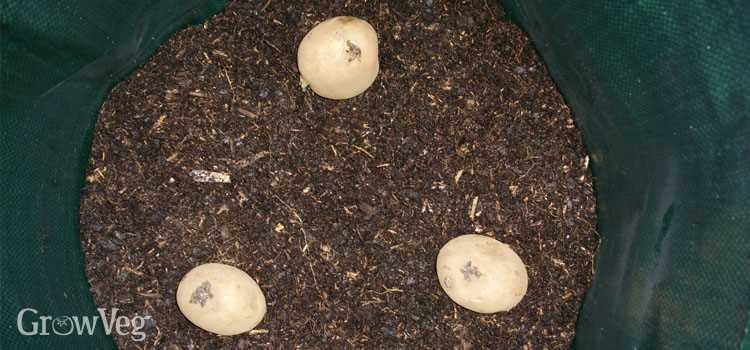
Adequate spacing between potato plants is crucial for their growth and development. Planting potatoes in rows with sufficient distance between each plant allows for better air circulation and prevents competition for resources. It also helps in easy access for maintenance activities like weeding and harvesting.
5. Irrigation and Fertilization

Proper irrigation and fertilization are vital for maximizing potato growth. Farmers should ensure that potato plants receive an adequate water supply, especially during critical growth stages. Additionally, applying appropriate fertilizers based on soil test results can provide the necessary nutrients for robust plant development.
6. Disease and Pest Control
Regular monitoring and timely control measures can help prevent diseases and pests from affecting potato growth. Farmers should be proactive in identifying any signs of diseases or pests and take appropriate action, such as the application of organic or chemical remedies, to minimize damage.
7. Harvesting and Storage
Harvesting potatoes at the right time is crucial for maximizing their growth potential and yield. It is recommended to harvest when the potato plants have fully matured, and the foliage starts to turn yellow. After harvesting, proper storage conditions should be maintained to prevent spoilage or sprouting.
| Technique | Description |
|---|---|
| Soil Preparation | Testing, amending, and tilling the soil to create an optimal growing environment for potatoes. |
| Crop Rotation | Rotating potatoes with other crops to break the cycle of pests and diseases. |
| Proper Seed Selection | Choosing high-quality, disease-free seed potatoes for planting. |
| Spacing and Planting | Providing adequate spacing between potato plants for optimal growth and maintenance. |
| Irrigation and Fertilization | Supplying sufficient water and nutrients for healthy potato development. |
| Disease and Pest Control | Taking preventive measures and applying remedies to protect potatoes from diseases and pests. |
| Harvesting and Storage | Harvesting potatoes at the right time and providing suitable storage conditions to maintain quality. |
Importance of Advanced Agricultural Techniques for Potato Growth
Introduction
Potatoes are one of the most widely consumed and important crops worldwide. Maximizing potato growth is crucial for ensuring a stable food supply and meeting the growing demands of a growing population. Advanced agricultural techniques play a significant role in achieving higher yields and better quality potatoes.
Better Yield
Advanced agricultural techniques such as precision planting and soil analysis help optimize the yield of potato plants. By accurately spacing the potato seeds and determining the optimal soil conditions, farmers can ensure maximum plant growth and minimize competition between plants. This leads to larger and more abundant potatoes.
Pest and Disease Management
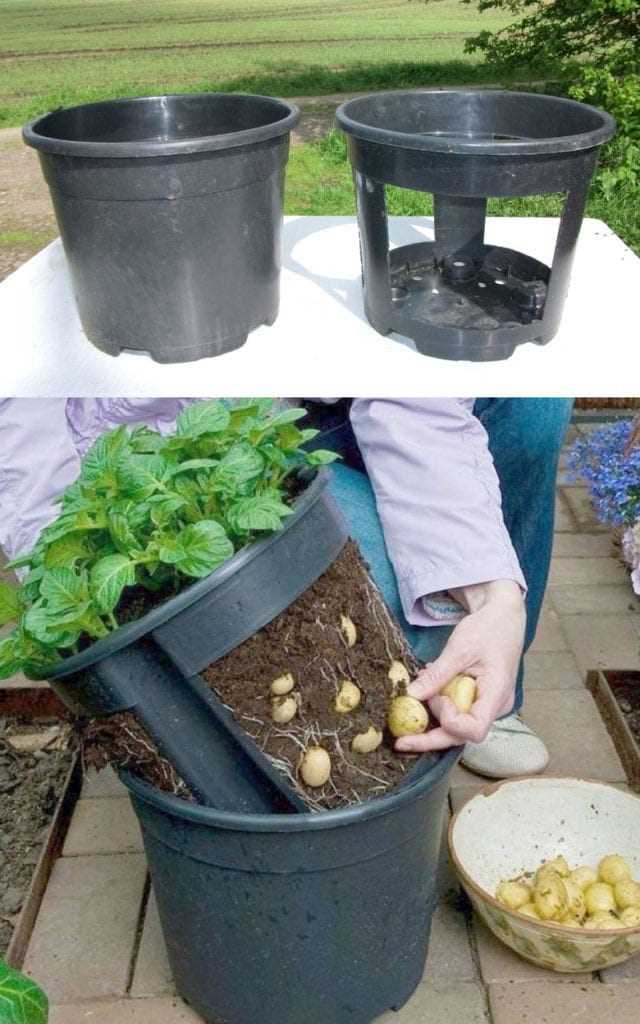
Potatoes are susceptible to a variety of pests and diseases that can significantly reduce their growth and yield. Advanced agricultural techniques, such as integrated pest management (IPM), allow farmers to control pests and diseases more effectively. By combining biological, cultural, and chemical control strategies, farmers can minimize the use of pesticides while still protecting their crops.
Water Efficiency
Water is a critical resource for potato growth, and advanced agricultural techniques can help optimize its usage. Techniques such as drip irrigation and mulching help conserve water by delivering it directly to the plant roots and reducing evaporation. By using water more efficiently, farmers can ensure optimal potato growth while minimizing water wastage.
Nutrient Management
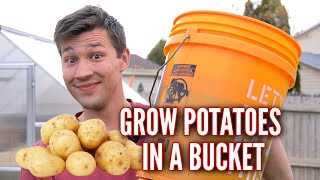
Proper nutrient management is essential for the healthy growth of potato plants. Advanced agricultural techniques, such as soil testing and fertigation, allow farmers to provide the correct balance of nutrients to the plants. This ensures that the potato plants receive all the necessary nutrients for optimal growth and development, resulting in healthier and more productive crops.
Sustainable Farming
Advanced agricultural techniques also contribute to sustainable farming practices. By using these techniques, farmers can minimize the use of chemical inputs, reduce soil erosion, and conserve water resources. This not only benefits the environment but also ensures the long-term viability of potato farming.
Conclusion
Advanced agricultural techniques are of paramount importance for maximizing potato growth. They help achieve higher yields, improve pest and disease management, increase water efficiency, optimize nutrient management, and promote sustainable farming practices. By adopting these techniques, farmers can ensure a steady supply of high-quality potatoes and contribute to a more sustainable and secure food system.
Maximizing Potato Yields through Efficient Farming Practices
Introduction
Efficient farming practices play a crucial role in maximizing potato yields. By implementing techniques that optimize the growth conditions and minimize the various constraints that affect potato plants, farmers can ensure a bountiful harvest. This article explores some efficient farming practices that can significantly increase potato yields.
1. Soil Testing and Preparation
Before planting potatoes, it is vital to conduct a soil test to determine its nutrient content and pH level. Based on the test results, farmers can make informed decisions about the appropriate fertilizer and pH adjustments necessary for optimal potato growth. Additionally, preparing the soil by tilling and removing weeds helps create a favorable environment for the potatoes to grow.
2. Crop Rotation
Implementing a crop rotation strategy is an effective technique for maximizing potato yields. Continuous potato planting in the same field can lead to the buildup of potato pests and diseases. By rotating potato crops with other plant varieties, farmers can reduce the risk of pests and diseases, resulting in healthier potato plants and higher yields.
3. Proper Irrigation
Potatoes require consistent moisture throughout their growth cycle. Implementing proper irrigation practices, such as providing the right amount of water at the right time, is essential for maximizing potato yields. Overwatering or underwatering can lead to suboptimal growth and reduced yields. Using irrigation systems like drip irrigation can help deliver water directly to the root zone, minimizing water wastage.
4. Integrated Pest Management
Pests and diseases can significantly impact potato yields. Implementing integrated pest management (IPM) practices can help control pests and diseases effectively while minimizing the use of chemical pesticides. Some IPM strategies include crop rotation, trap crops, and the application of natural predators or biological control agents.
5. Timely Harvesting
Harvesting potatoes at the right time is crucial for maximizing yields. Leaving potatoes in the ground for too long can lead to rotting or damage, while harvesting them too early can result in underdeveloped tubers. Monitoring the maturity of the plants and understanding the specific variety’s ideal harvesting time can help farmers achieve optimal yields.
Conclusion
By implementing efficient farming practices such as soil testing and preparation, crop rotation, proper irrigation, integrated pest management, and timely harvesting, farmers can significantly increase potato yields. These practices help create an optimal growth environment, reduce constraints, and control pests and diseases effectively. With careful implementation, farmers can ensure a bountiful harvest and maximize their potato yields.
The Role of Soil and Nutrient Management in Potato Growth
Potatoes are a versatile and widely consumed crop that require specific soil conditions and nutrient management techniques to maximize their growth and yield. Proper soil preparation and correct nutrient application play a vital role in ensuring healthy potato plants and high-quality tubers.
Soil Preparation
- Choosing the right soil type is crucial for successful potato cultivation. Well-drained sandy loam soil with good organic matter content is ideal for potato growth.
- The soil should be deeply tilled to a suitable depth (around 6-8 inches) before planting to create a loose and friable texture, allowing for root penetration and nutrient uptake.
- Proper soil pH is essential for optimal potato growth. The pH level should range from 5.0 to 6.5, as a slightly acidic to neutral soil pH facilitates better nutrient availability.
- Before planting, it’s recommended to conduct a soil test to assess the nutrient levels and adjust accordingly to meet the specific requirements of the potato crop.
Nutrient Management
Potatoes have specific nutrient requirements at different growth stages. The following nutrients are essential for healthy potato growth:
| Nutrient | Role |
|---|---|
| Nitrogen (N) | Nitrogen is crucial for vegetative growth, leaf development, and tuber formation. It should be applied in the early stages of plant growth. |
| Phosphorus (P) | Phosphorus promotes root development, flowering, and tuber initiation. It should be provided at the time of planting. |
| Potassium (K) | Potassium is important for overall plant health, disease resistance, and tuber quality. It should be applied throughout the growing season. |
Other essential micronutrients for potato growth include calcium, magnesium, sulfur, and boron. These micronutrients are required in smaller quantities but play significant roles in various plant physiological processes.
Applying fertilizers according to soil test recommendations and observing plant nutrient deficiency symptoms can help ensure proper nutrient management. However, it’s vital to avoid over-fertilization, as excessive nutrient levels can lead to environmental pollution and reduced crop quality.
In summary, soil and nutrient management are essential aspects of potato cultivation. By preparing the soil adequately and providing the necessary nutrients at the right time, farmers can optimize potato growth, maximize yield, and produce high-quality tubers.
Utilizing Crop Rotation for Optimal Potato Harvests
Crop rotation is a common agricultural practice that involves planting different crops in a specific sequence over a period of years. This technique is used to improve soil health, control pests and diseases, and optimize crop yields. When it comes to potato farming, crop rotation plays a crucial role in maximizing harvests.
Benefits of Crop Rotation for Potato Growth
1. Disease Control: One of the main reasons why crop rotation is important for potato farming is disease control. Certain pathogens and pests that affect potatoes tend to build up in the soil over time. By rotating potato crops with other crops that are not susceptible to the same diseases, farmers can reduce the risk of crop damage and yield losses.
2. Weed Management: Crop rotation can also help with weed management. Different crops have different growth patterns and nutrient requirements, which can disrupt the life cycle of weeds and reduce their abundance. By rotating potatoes with crops that have vigorous growth, farmers can effectively suppress weeds and minimize competition for resources.
3. Soil Health: Potatoes are known to deplete certain nutrients from the soil. By rotating crops, farmers can give the soil a chance to recover and replenish these nutrients naturally. Additionally, planting leguminous crops like beans or peas in the rotation can help fix nitrogen into the soil, which is beneficial for potato growth.
Recommended Crop Rotation Practices for Potatoes
1. Avoid Planting Potatoes in the Same Spot: To prevent the buildup of diseases and pests, it is recommended to avoid planting potatoes in the same spot for consecutive years. Ideally, potatoes should be rotated with other crops for at least two years before they are planted again in the same field.
2. Choose Complementary Crops: When selecting crops for rotation, it is important to choose crops that have different nutrient requirements and growth patterns. This helps ensure that the soil remains fertile and balanced throughout the rotation cycle.
3. Include Cover Crops: Cover crops such as rye, oats, or clover can be planted during fallow periods in the rotation cycle. These crops help prevent soil erosion, improve organic matter content, and suppress weed growth.
Conclusion
Crop rotation is an effective technique for maximizing potato harvests. By implementing proper crop rotation practices, farmers can minimize the risks of diseases, pests, and weeds, while maintaining healthy soil conditions for optimal potato growth. This sustainable farming practice not only enhances crop yields but also contributes to the long-term viability of potato farming.
Effective Pest and Disease Control Strategies in Potato Farming
Growing potatoes can be a rewarding endeavor, but it also comes with its fair share of challenges. One of the main challenges faced by potato farmers is controlling pests and diseases that can significantly reduce crop yields. However, with the right strategies in place, farmers can effectively manage pests and diseases to ensure a healthy potato harvest.
1. Crop Rotation
Crop rotation is a vital strategy for pest and disease control in potato farming. By rotating crops, farmers can effectively disrupt the life cycles of pest organisms, reducing their populations. It also helps in preventing the buildup of diseases in the soil. It is recommended to rotate potatoes with crops from different plant families, such as legumes or grains, to break the cycle of pests and diseases.
2. Proper Field Preparation
Proper field preparation is essential in reducing the risk of pests and diseases. Farmers should clear the field of crop residue, as it can serve as a breeding ground for pests and pathogens. Ensuring proper drainage and adequate soil fertility also helps in promoting healthy plant growth, making them less susceptible to diseases.
3. Use of Certified Disease-Free Seed Potatoes
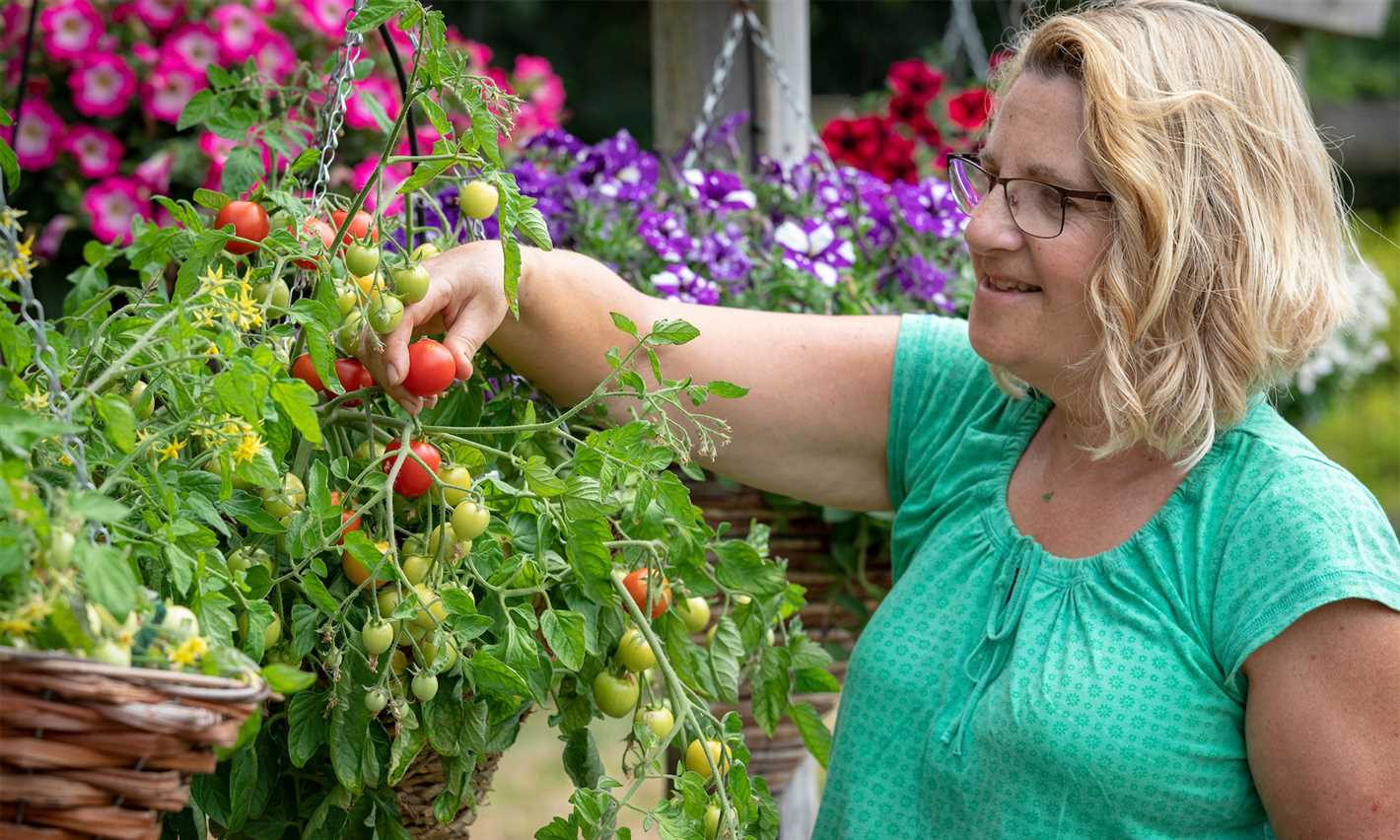
Using certified disease-free seed potatoes is crucial for preventing the introduction of diseases into the field. Farmers should source their seed potatoes from reputable suppliers who follow strict disease control measures. This practice minimizes the risk of introducing common potato diseases, such as late blight or bacterial wilt, into the farming operation.
4. Monitoring and Early Detection
Regular monitoring of the potato crop is essential in detecting pest and disease problems early. Farmers should inspect the plants regularly for any signs of pests, such as aphids or Colorado potato beetles, as well as symptoms of diseases, such as leaf spots or wilting. Early detection allows for timely intervention, reducing the potential damage to the crop.
5. Integrated Pest Management
Integrated Pest Management (IPM) is a comprehensive approach to pest control that combines different strategies to manage pests effectively. It involves the use of cultural practices, biological control agents, and targeted pesticide applications, if necessary. Implementing IPM strategies helps in minimizing the reliance on chemical pesticides, reducing environmental impact and promoting sustainable farming practices.
6. Proper Storage and Post-Harvest Handling
After harvest, it is crucial to store the potatoes properly to prevent the development of diseases in storage. Potatoes should be stored in cool, dry conditions, with adequate ventilation to avoid the growth of fungi or bacteria. Proper post-harvest handling, such as careful sorting and removal of damaged tubers, also helps in reducing the risk of disease spread and extending the shelf life of the harvest.
By implementing these effective pest and disease control strategies, potato farmers can protect their crops and maximize their yields. It is important to continuously educate themselves about new pests and diseases and stay updated on the latest management techniques to ensure a successful potato farming operation.
Enhancing Potato Growth with Proper Irrigation Techniques
Potatoes are a staple crop in many parts of the world and their growth can be greatly enhanced by implementing proper irrigation techniques. Adequate water supply is essential for the development of healthy potato plants and maximizing their yield. Here are some key considerations for achieving optimal irrigation:
1. Soil Moisture Monitoring
Regularly monitoring soil moisture levels is crucial for determining the watering needs of potato plants. This can be done using a moisture meter or by simply assessing the soil’s moisture content by hand. The goal is to maintain a consistent level of moisture in the root zone throughout the growing season to ensure optimal growth.
2. Watering Frequency
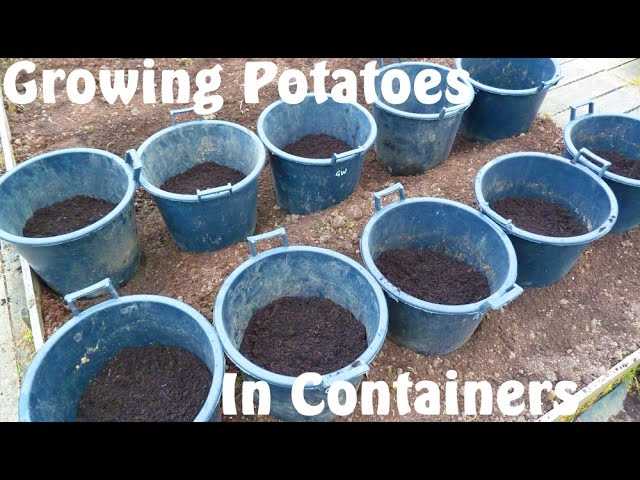
Establishing a regular watering schedule is important for maintaining consistent soil moisture. As a general guideline, potato plants require approximately 1-2 inches of water per week, depending on temperature and rainfall. This can be achieved by watering deeply once or twice a week, rather than shallow, frequent watering.
3. Irrigation Method
The choice of irrigation method can also influence potato growth. Drip irrigation or soaker hoses are preferred over overhead sprinklers as they deliver water directly to the root zone, reducing water loss through evaporation and minimizing the risk of fungal diseases. Additionally, using mulch around the plants can help conserve moisture and reduce weed growth.
4. Timing of Irrigation
Irrigating potatoes during the early morning or late afternoon is ideal, as it allows the foliage to dry quickly, reducing the risk of disease. Avoid watering in the evening or at night, as prolonged leaf wetness can promote the development of fungal infections.
5. Water Quality
The quality of water used for irrigation can also affect potato growth. Ideally, the water should be free from salts and contaminants that may hinder the plant’s ability to absorb nutrients. If the water source has a high salt content, it’s important to flush the soil periodically to prevent salt buildup.
By implementing proper irrigation techniques, potato farmers can ensure optimal water supply to their crops, resulting in healthier plants and higher yields. Consistent monitoring of soil moisture, regular watering, and the use of appropriate irrigation methods can greatly enhance the growth and productivity of potato plants.
Harvesting 15-Litre Buckets from Each Potato Plant
Growing potatoes in 15-litre buckets can lead to an abundant harvest. Here are some tips for harvesting maximum yield from each potato plant:
1. Proper Planting Technique
Start by selecting healthy potato tubers and cut them into pieces, each containing at least one “eye” or bud. Dig a hole in the bucket and place the potato pieces, eye-side up, about 4-6 inches deep. Cover them with soil and water thoroughly.
2. Regular Feeding and Watering
To ensure optimal growth, feed your potato plants with a balanced fertilizer every 2-3 weeks. Additionally, make sure to water them regularly, keeping the soil consistently moist but not waterlogged.
3. Provide Ample Sunlight
Place the potato buckets in a sunny location, receiving at least 6-8 hours of direct sunlight. This helps the plants photosynthesize efficiently, resulting in healthier foliage and more robust tuber growth.
4. Proper Hilling
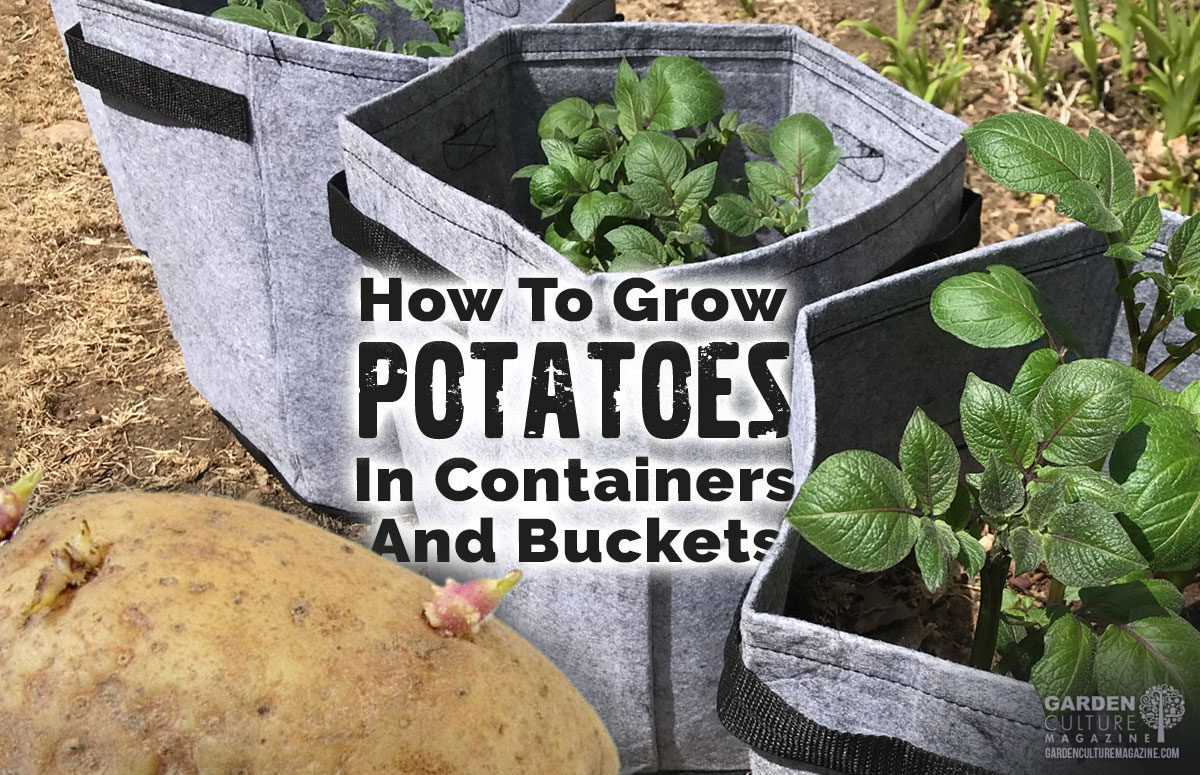
Hilling is the process of adding soil around the base of the plants as they grow. This encourages additional tuber development and protects the potatoes from sunlight exposure, which can turn them green and toxic. Add soil gradually, covering about two-thirds of the plant’s stems.
5. Regular Pest and Disease Monitoring
Keep an eye out for common potato pests such as aphids, Colorado potato beetles, and potato leafhoppers. Regularly inspect your plants for any signs of disease, such as early or late blight. Promptly address any issues to prevent extensive damage to your crop.
6. Harvesting
When the potato plant foliage turns yellow and starts to die back, it’s a sign that the tubers are ready for harvest. Carefully dig around the base of the plant and gently lift the entire plant out of the bucket. Remove the potatoes from the soil, taking care not to bruise or damage them.
Tip: Harvesting is best done on a sunny day when the soil is dry, as this helps prevent the potatoes from rotting during storage.
7. Curing and Storage

After harvesting, allow the potatoes to dry and cure for a week or two in a cool, dark, and well-ventilated area. This helps the potatoes develop a tough skin and improves their flavor. Store the cured potatoes in a cool, dry, and dark place, preferably in mesh bags or baskets to allow for proper airflow.
By following these tips and techniques, you can maximize your potato yield and harvest 15-litre buckets filled with healthy and delicious potatoes from each plant.
“Question-Answer”
What are some advanced agricultural techniques for maximizing potato growth?
Some advanced agricultural techniques for maximizing potato growth include precision planting, controlled irrigation, nutrient management, crop rotation, and pest and disease control.
How can precision planting help maximize potato growth?
Precision planting involves placing the potato seeds at optimal distances, depths, and positions in the soil, which ensures proper spacing, minimizes competition, and maximizes nutrient uptake and yield.
What is controlled irrigation and how can it benefit potato growth?
Controlled irrigation involves carefully managing the amount and timing of water supply to the potato plants. This technique helps prevent over- or under-watering, ensures proper moisture levels in the soil, and promotes healthy root development, leading to enhanced potato growth and yield.
How does nutrient management contribute to maximizing potato growth?
Nutrient management involves providing the potato plants with the right balance of essential nutrients, such as nitrogen, phosphorus, and potassium, throughout their growth cycle. Proper nutrient management helps optimize plant growth, improve overall health, and increase potato production.
What is crop rotation and why is it important for potato growth?
Crop rotation is the practice of growing different crops in a specific sequence on the same land over time. It helps break the disease and pest cycles that can affect potato plants, improves soil fertility, reduces nutrient depletion, and enhances overall potato growth and yield.
How can pest and disease control techniques maximize potato growth?
Pest and disease control techniques involve monitoring, preventing, and managing the pests and diseases that commonly affect potato plants. By implementing effective control measures, such as biological controls and integrated pest management, farmers can minimize crop damage, maximize plant health, and optimize potato growth and yield.
What are the advantages of harvesting 15-litre buckets from each potato plant?
Harvesting 15-litre buckets from each potato plant offers several advantages. It allows for a higher yield per plant, which can increase overall production. It also provides an opportunity to select and retain only the best potatoes for consumption or sale, ensuring better quality and market value. Additionally, harvesting individual plants in buckets can minimize damage to the potatoes during the harvesting process.







